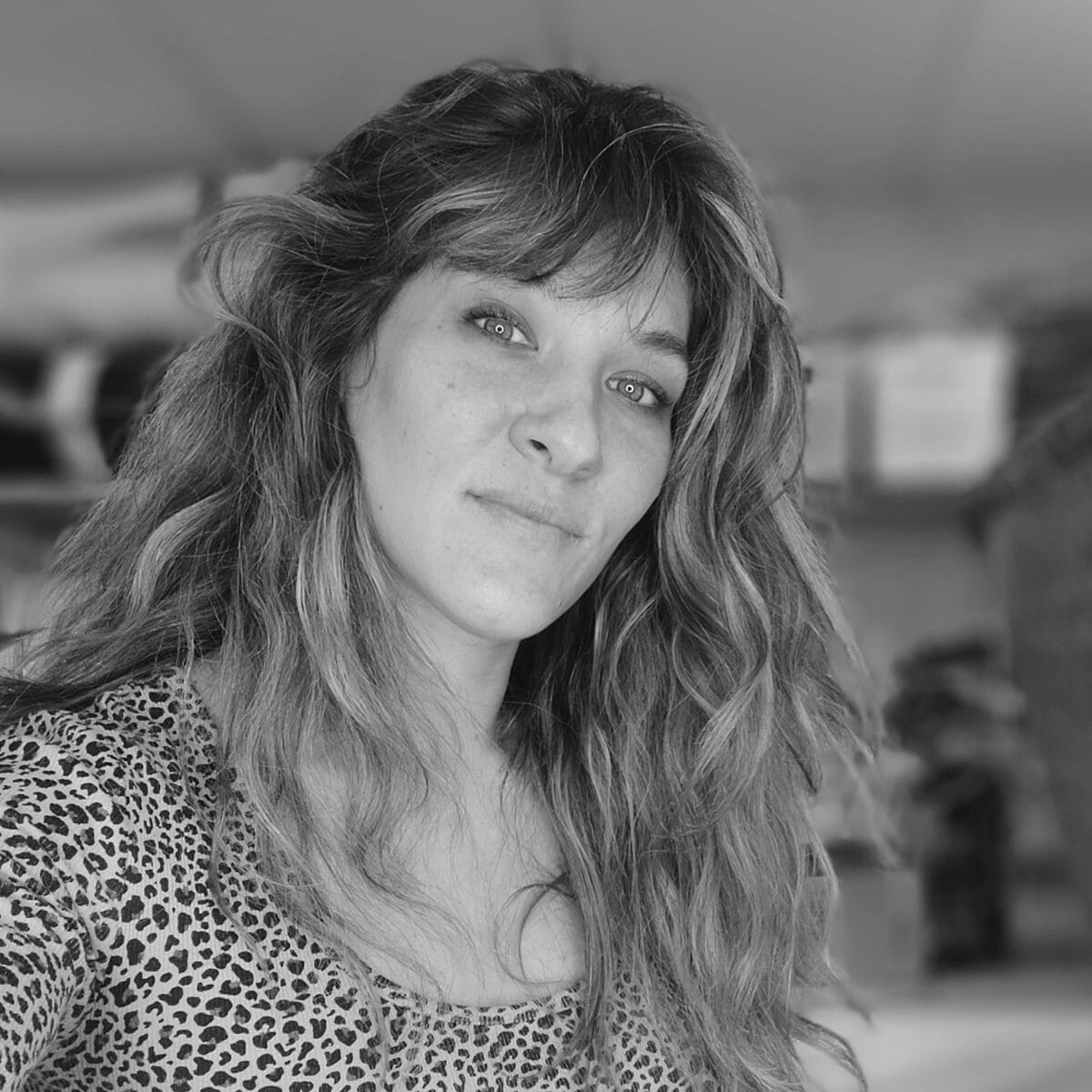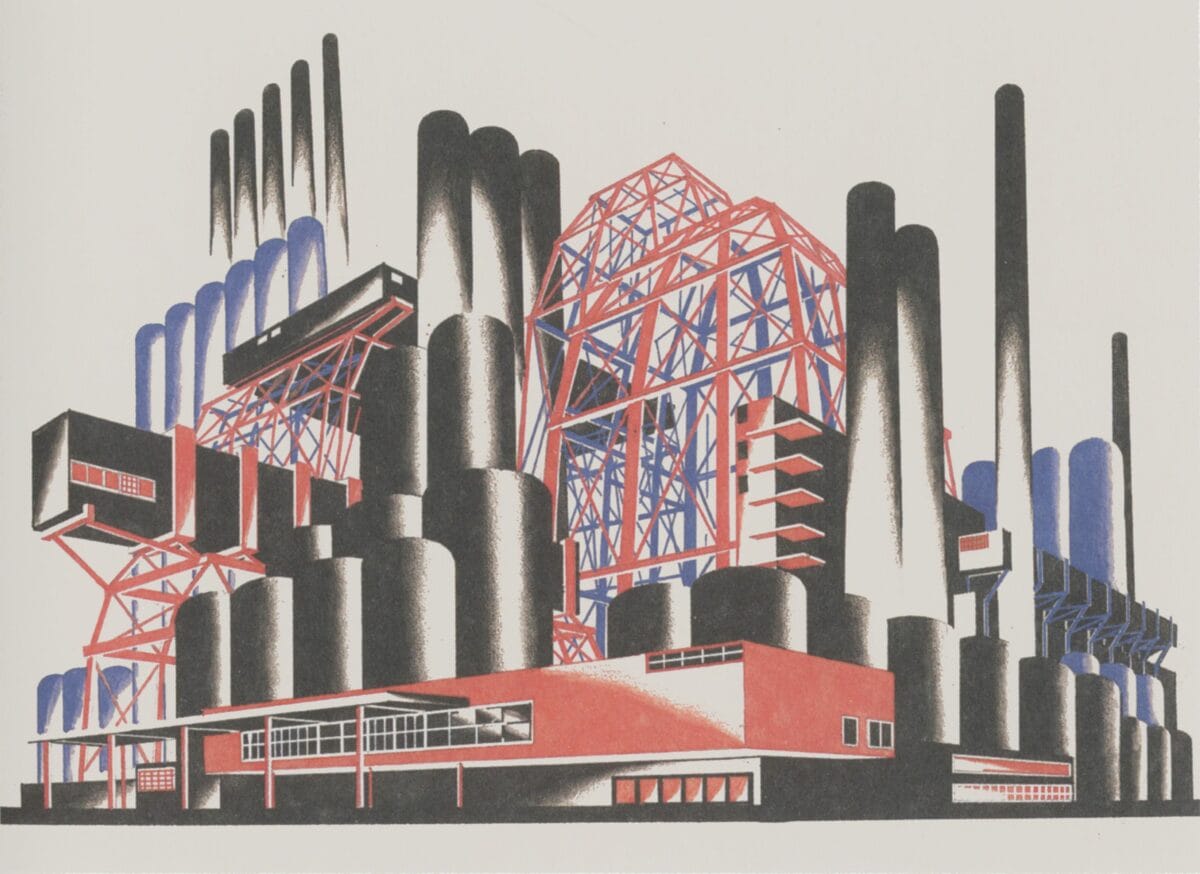Moscow, 1917. While Parisian Art Deco celebrated the luxury of the interwar period and Dutch De Stijl pursued pure abstraction, the October Revolution shook Russia and gave birth to one of the most radical artistic movements of the 20th century. Russian Constructivism emerged from revolutionary chaos, carried by an unshakeable conviction: art must no longer serve the bourgeois elite but construct the new society.
Far from Parisian salons and Dutch studios, Russian artists chose the factory over the museum, mass production over unique works, social utility over aesthetic contemplation. Vladimir Tatlin, Alexander Rodchenko, El Lissitzky, and Varvara Stepanova radically transformed the very notion of art, inventing a visual language in service of the proletarian revolution. This movement, which would last only fifteen years before being stifled by Stalinist socialist realism, would lastingly influence modern architecture, graphic design, and 20th-century photography.
What is Russian Constructivism
Constructivism is defined by its absolute rejection of art for art’s sake. Unlike Western avant-garde movements that cultivated aesthetic autonomy, Constructivists affirmed that the artist must become engineer, architect, or skilled worker. Traditional artwork, contemplative and bourgeois, must give way to construction – utilitarian objects, propaganda posters, social architecture, militant photomontages.
This radicalism fundamentally distinguished Constructivism from its contemporaries. Where De Stijl sought universal harmony in geometric abstraction, Constructivism put geometry in service of productive efficiency. Where the Bauhaus attempted to reconcile art and industry, Constructivism purely and simply abolished the distinction between the two. This extreme position reflected the revolutionary context: it wasn’t about reforming art but transforming it into a tool of social construction.
The movement emerged around 1915 with Tatlin’s counter-reliefs, but truly crystallized after the October Revolution of 1917. The manifesto of the Obmokhu group (Society of Young Artists) in 1919, then the 1921 debate at Inkhuk (Institute of Artistic Culture) marked the definitive break with traditional art. This history is inscribed in the great history of design as a moment of political and formal radicalism without equivalent.
Historical & Cultural Context
Early 20th-century Russia experienced remarkable artistic effervescence. Even before the revolution, Russian Futurism of Mayakovsky and Khlebnikov, Malevich’s Suprematism with his famous Black Square (1915), and Tatlin’s experiments prepared the ground. These movements shared a fascination with modernity, the machine, and speed, while fitting into a Russian tradition of intellectual radicalism.
The October Revolution of 1917 radically transformed the situation. For the first time in history, a state explicitly claimed Marxism and affirmed its desire to build a classless society. Avant-garde artists, often from modest backgrounds, saw in this revolution the historical opportunity to put art in service of the masses. The new Bolshevik power, in its early years, encouraged these experiments, creating institutions like Narkompros (People’s Commissariat for Education) directed by Anatoly Lunacharsky.
This period of relative creative freedom, from 1918 to around 1922, saw the emergence of extraordinary projects. The Proletkult (proletarian cultural organizations), Vkhutemas (Higher Art and Technical Studios, Russian equivalent of the Bauhaus), and numerous avant-garde magazines like LEF (Left Front of the Arts) became laboratories of Constructivism. Moscow and Petrograd (future Leningrad) bubbled with creative energy.
But this revolutionary context also explains the movement’s brevity. The Civil War (1918-1922), the New Economic Policy (NEP) from 1921, and especially the consolidation of Stalinist power in the 1920s progressively stifled experimentation. Socialist realism became official doctrine in 1934, ending all avant-garde. Many Constructivist artists emigrated, converted, or were marginalized.
Aesthetic Characteristics
Constructivist aesthetics is recognizable by its assumed brutality. Rejection of bourgeois refinement, celebration of raw industrial materials – steel, glass, concrete –, angular and dynamic geometry. Compositions favored diagonals and asymmetries that suggested movement, energy, revolutionary transformation.
Materials and Techniques
Constructivism broke with traditional art materials. No more bronze, marble, or oil paint. Constructivists worked with metal, industrial wood, glass, nascent plastic. This material revolution wasn’t only aesthetic: it affirmed that art must use the same materials and techniques as modern industry.
The photomontages of Rodchenko and Klutsis invented a new visual language. By cutting and recomposing photographs, they created impossible, surreal images that served revolutionary propaganda. This radically modern technique democratized image production: no need to know how to draw, photography and scissors were enough.
Constructivist typography revolutionized graphic design. El Lissitzky and Rodchenko used characters as visual elements in their own right, arranged them diagonally, played with scale contrasts, mixed Cyrillic and Latin. Constructivist posters, with their dynamic compositions in red and black, became iconic.
Formal Principles
Three principles structured Constructivist aesthetics. First, tectonics: revealing structure, showing how the object is built rather than masking its fabrication. Then, faktura: highlighting materials’ own qualities, their texture, their resistance. Finally, construction: the work must be assembled, mounted, built like an industrial object, not modeled or painted like an artisanal work.
These principles opposed frontally both Russian academic tradition and Western expressionism. No personal gesture, no subjective emotion: only the objective logic of construction and materials. This claimed impersonality served the political project: the Constructivist artist-engineer worked for the collective, not to express his bourgeois individuality.
Creators & Key Figures
Vladimir Tatlin
Vladimir Tatlin (1885-1953) embodied the founding figure of Constructivism. His counter-reliefs (1915), assemblages of metal and wood that emerged from the wall to occupy space, broke with easel painting. But it was his project for the Monument to the Third International (1920), never realized, that became the movement’s icon.
This 400-meter spiral tower, surpassing the Eiffel Tower, was to house the organs of Soviet power in rotating geometric volumes – cube, pyramid, cylinder. Technically and financially utopian, this project illustrated the Constructivists’ outsized ambition: to create revolutionary architecture for a revolutionary society. Tatlin would later devote years to the Letatlin, an individual flying machine inspired by birds, mixing technical obsession and poetry.
Alexander Rodchenko
Alexander Rodchenko (1891-1956) was the most polymorphous of the Constructivists. An abstract painter, he progressively abandoned canvas for photomontage, photography, and graphic design. His posters for state stores, his covers for LEF magazine, his revolutionary page layouts established the codes of modern graphics.
His photographs, taken from radical plunging or low-angle perspectives, transformed the vision of everyday life. This aesthetic of unusual viewpoint aimed to “defamiliarize” reality, to show it from an angle that forced one to see it differently – a principle inherited from Russian literary formalism. Rodchenko also worked in furniture design, creating folding tables and chairs in wood and metal, functional and economical.
El Lissitzky
El Lissitzky (1890-1941) bridged Suprematism and Constructivism. His Prouns (Projects for the Affirmation of the New), axonometric compositions floating in space, developed a utopian abstract architecture. But it was especially in graphic design and scenography that he excelled.
His poster Beat the Whites with the Red Wedge (1919) became the emblematic image of the civil war: a dynamic red triangle pierces a passive white circle. Simple, brutal, effective. Lissitzky traveled in Europe, spread Constructivist ideas, influenced the Bauhaus and De Stijl. His Abstract Cabinet for the Hanover museum (1927) invented modern scenography with its mobile panels.
Varvara Stepanova
Varvara Stepanova (1894-1958), Rodchenko’s companion, embodied Constructivism applied to textiles and fashion. Her Constructivist fabrics with colored geometric patterns, designed for mass production, aimed to dress the new Soviet citizen. She also created costumes for Meyerhold’s theater, applying Constructivist principles to the stage.
With Liubov Popova (1889-1924), who died prematurely, Stepanova represented the essential female contribution to the movement, often minimized by historiography. Their work on textiles and clothing design illustrated the Constructivist ambition to transform all aspects of daily life.
Alexander Vesnin and the Vesnin Brothers
The Vesnin brothers – Leonid, Viktor, and especially Alexander (1883-1959) – applied Constructivism to architecture. Their project for the Palace of Labor (1923, unrealized) showed a glass and steel structure of spectacular modernity. Their realizations, like the Lykhovitsky Club in Moscow (1928), testified to radical functionalist architecture.
Representative Architecture and Design
Monument to the Third International
Tatlin’s project (1920) remained the most emblematic architectural work of Constructivism, though it was never built. This 400-meter spiral tower in steel and glass was to contain four rotating geometric volumes: a cube completing one revolution per year (for congresses), a pyramid rotating monthly (for executive organs), a cylinder rotating daily (for information services), and a hemisphere rotating hourly (for press services).
This utopian architectural machine synthesized Constructivist principles: exposed structure, industrial materials, extreme functionalism, monumental dimension serving the collective. Its influence extended far beyond Russia, inspiring the high-tech architecture of the 1970s-1980s.
Rodchenko’s Workers’ Club
At the Soviet pavilion of the International Exhibition of Decorative Arts in Paris in 1925, Rodchenko presented his Workers’ Club, a manifesto of Constructivist design. Folding furniture in wood and metal, primary colors, maximum modularity: each element could be dismantled, moved, reconfigured according to needs. Chess, reading, collective activities – everything was planned in this space that embodied the ideal of proletarian culture.
This realization directly influenced modern furniture, anticipating contemporary concerns for flexibility and economy of means. The contrast with the refined luxury of French Art Deco, omnipresent in the exhibition, illustrated the radical opposition of two worldviews.
Vkhutemas
Vkhutemas (Higher Art and Technical Studios, 1920-1930) constituted the Russian equivalent of the Bauhaus. This school trained artist-engineers according to Constructivist principles. The mandatory preliminary course taught the basics of form, color, space, and construction.
Vkhutemas productions – furniture, ceramics, textiles, architectural projects – systematically applied principles of rationality, economy, and productive efficiency. Unfortunately, the school closed in 1930, victim of the Stalinist turn, but its influence persisted through its emigrated former students.
Constructivist Posters
Photomontage and posters became Constructivism’s privileged media. Gustav Klutsis developed a spectacular political photomontage technique, mixing photographic images and typographic elements in dynamic compositions. His posters for the five-year plans celebrated Soviet industrialization.
The Stenberg brothers (Vladimir and Georgy) created film posters of stunning modernity. Their compositions for films by Dziga Vertov or Eisenstein used photography, oblique typography, and bright colors to create memorable images that lastingly influenced world graphics.
International Influence and Impact
Dialogue with the West
Constructivism maintained complex relations with Western avant-gardes. El Lissitzky, traveling in Germany, established contacts with the Bauhaus and De Stijl. Constructivist magazines were distributed in Europe, influencing German and Dutch graphic design.
But ideological differences remained profound. The Bauhaus sought to humanize industrial production, Constructivism to abolish the distinction between art and production. This political radicalism, admired by some Western intellectuals, also frightened in the context of the nascent Cold War.
Rodchenko’s exhibition in Paris in 1925 made an impression. His Workers’ Club, so different from the surrounding Art Deco luxury, revealed another path for modern design. Architects like Le Corbusier acknowledged their debt to Russian Constructivists, notably in their use of raw concrete and radical functionalism.
Legacy and Posterity
Constructivism’s influence crossed the century in an underground but powerful way. The International Typographic Style or Swiss Style, dominant in the postwar period, directly took up Constructivist innovations: modular grids, sans serif typography, objective photography, asymmetrical compositions.
In architecture, Brutalism of the 1950s-1970s reconnected with Constructivist aesthetics: raw concrete, exposed structure, functional monumentality. Architects like the Smithsons in England or Paul Rudolph in the United States explicitly acknowledged this heritage.
Contemporary graphic design constantly draws from the Constructivist repertoire. Diagonal compositions, photomontages, expressive typography still characterize today’s “alternative” or “progressive” aesthetics. Designers among the great current names like David Carson, Neville Brody, or Stefan Sagmeister reactivated Constructivist heritage in the 1990s-2000s.
In Contemporary Visual Culture
Constructivist aesthetics profoundly marked 20th-century visual culture. Revolutionary posters worldwide – from Cuba to Maoist China, from May ’68 in France to Third World liberation movements – systematically borrowed from Constructivist vocabulary: photomontage, expressive typography, dynamic diagonals, red and black.
Punk graphics of the 1970s, with Jamie Reid for the Sex Pistols, took up the Constructivist photomontage technique to create a visual language of rupture. More recently, contemporary cultural poster design – concerts, exhibitions, theater – continues to draw from this formal repertoire.
The influence extends even to cinema and video. Rapid montage, unusual camera angles, documentary aesthetics invented by Constructivist filmmakers (Dziga Vertov, Eisenstein) still irrigate current audiovisual production, from music videos to militant videos.
Current Market and Collections
Valuation and Market
The Constructivist art market has experienced spectacular valorization since the 1990s. Rodchenko’s works reach several million dollars in international sales. His vintage photographs, original photomontages, and even posters in good condition constitute prized investments.
Architectural projects by Tatlin, Lissitzky, and the Vesnin brothers, preserved as drawings and models, also trade at high prices. These documents testify to an architectural utopia that fascinates collectors and institutions.
Original Constructivist posters, relatively numerous as they were produced in series, remain more accessible. Depending on their rarity and condition, they range from a few hundred to several tens of thousands of euros. Contemporary reissues of Constructivist furniture, notably Rodchenko’s furniture, allow broader diffusion of this aesthetic.
Institutions and Research
The main Constructivist collections are found at the Tretyakov Gallery in Moscow, the Russian Museum in St. Petersburg, and MoMA in New York which possesses a remarkable collection assembled as early as the 1920s-1930s. The Centre Pompidou in Paris also conserves major pieces.
Historical research on Constructivism experiences constant renewal. The opening of Russian archives after 1991 allowed better understanding of the production context, theoretical debates, and the tragic fate of many artists under Stalin. Regular exhibitions continually reevaluate the movement’s importance in modern art history.
Conclusion
Russian Constructivism embodied one of art history’s most radical attempts to abolish the separation between artistic practice and social production. By affirming that the artist must become an engineer and that art must serve the revolution, Constructivists lastingly transformed the very conception of modern design and architecture.
This political and formal radicalism profoundly distinguished Constructivism from its contemporaries. Where Art Deco celebrated luxury and refinement, Constructivism advocated productive austerity. Where De Stijl sought universal harmony in pure abstraction, Constructivism put geometry in service of revolutionary efficiency. The Bauhaus, in some ways, would attempt to synthesize these approaches, borrowing from Constructivism its functionalism and desire for social transformation, while maintaining an aesthetic dimension that the most radical Constructivists rejected.
Constructivism’s political failure – crushed by Stalinism from the early 1930s – must not mask its immense aesthetic influence. Constructivist formal innovations – photomontage, dynamic typography, functionalist architecture, brutal highlighting of materials – profoundly marked 20th-century design. From Swiss style to Brutalism, from punk graphics to documentary photography, Constructivist heritage remains alive.
Contemporary creators continue to draw inspiration from this revolutionary aesthetic. In architecture, figures like Rem Koolhaas or Zaha Hadid acknowledged their debt to Constructivist utopia. In graphics, David Carson, Neville Brody, and an entire generation of “deconstructivist” designers of the 1990s reactivated Constructivist formal vocabulary. In photography, the documentary aesthetic and radical camera angles invented by Rodchenko still irrigate contemporary production.
A century after its birth, Constructivism fascinates through its political intransigence and formal radicalism. In a world where art and design are largely integrated into the capitalist market, the Constructivist project – putting creation in service of social transformation – retains a powerful utopian charge. Its message still resonates: form is never neutral, design is always political, and beauty can serve the construction of a more just world.
This unresolved tension between social utopia and formal innovation, between political engagement and aesthetic autonomy, makes Constructivism a perpetually relevant movement. Its legacy reminds us that design can be a tool of social transformation, that aesthetics is inseparable from ethics, and that formal audacity can carry a societal project. Even if the revolutionary context that saw it born belongs to history, the Constructivist requirement – to create in order to transform – remains an inspiration for those who refuse that design serve only commerce and consumption.

Digital entrepreneur and craft artisan, I use my unconventional background to share my vision of luxury design and interior decoration — one enriched by craftsmanship, history, and contemporary creation. Since 2012, I have been working daily in my workshop on the shores of Lake Annecy, creating bespoke interiors for discerning decorators and private clients.

